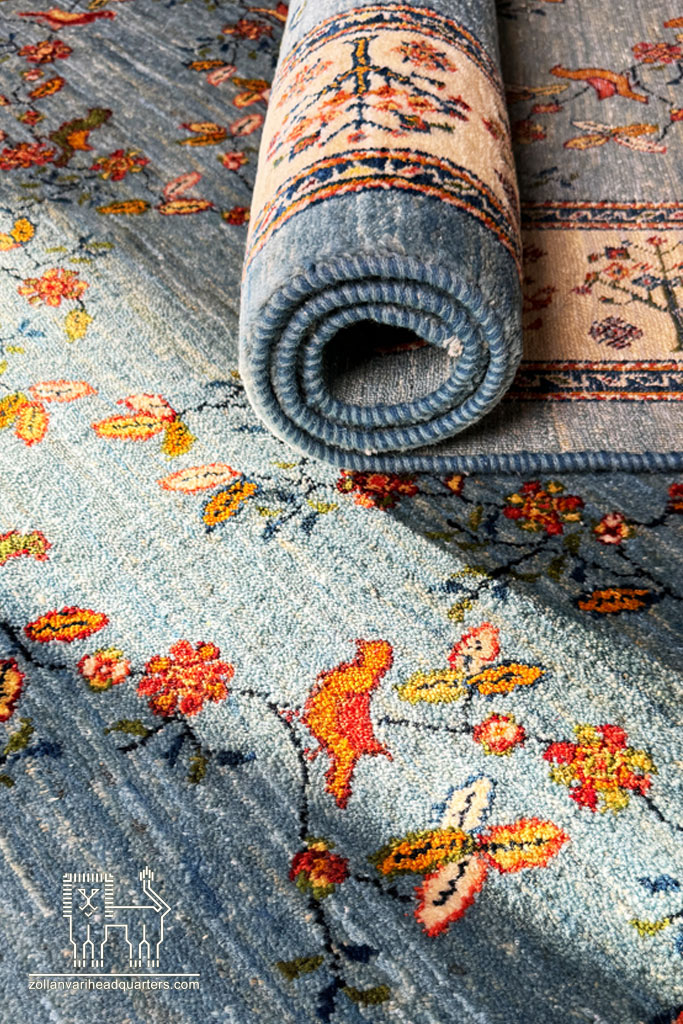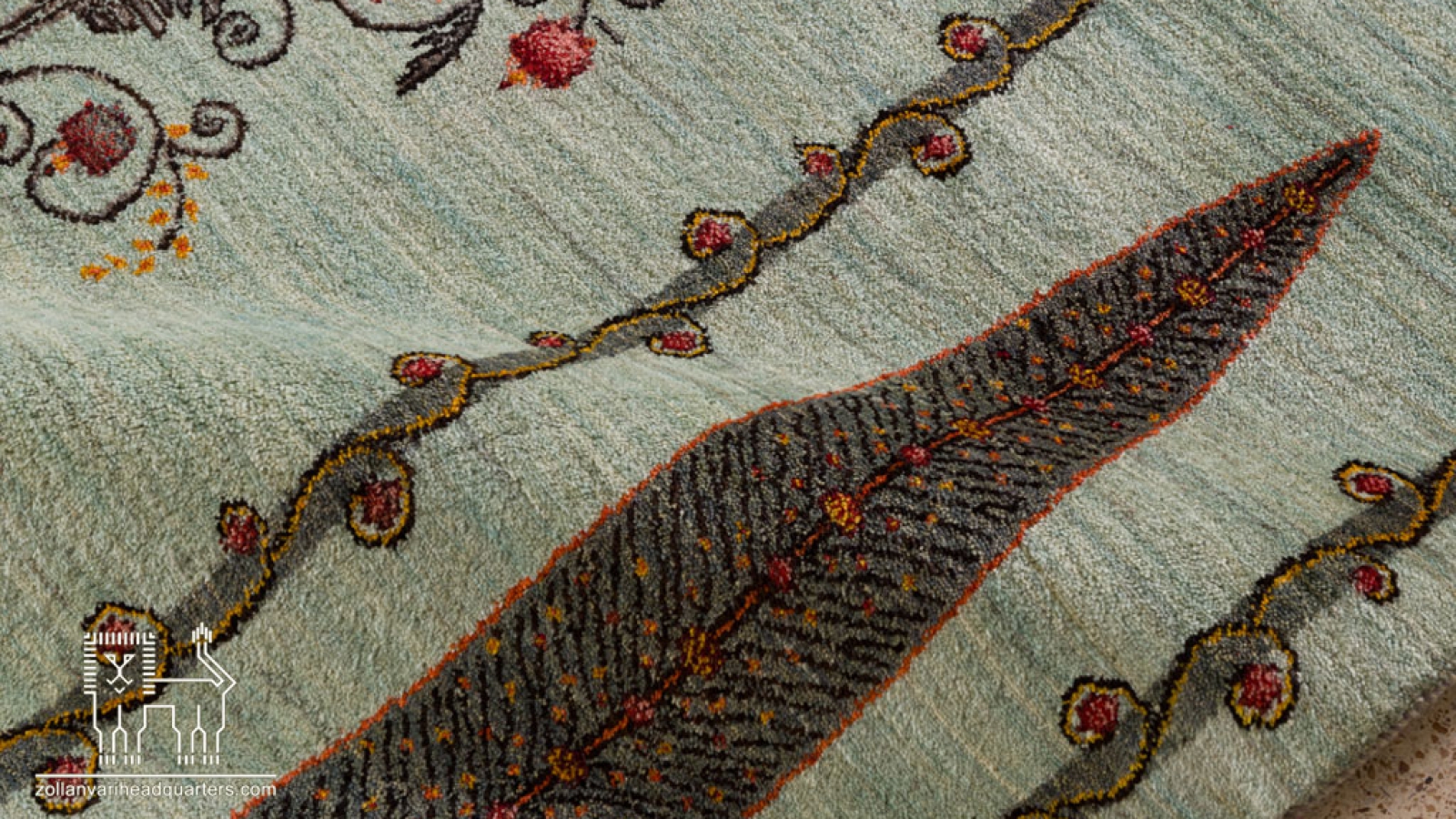Sirjan Needlework Carpet
This carpet is considered one of the unique handicrafts of Iran, reflecting the history, culture, and exceptional skills of the people in this region. These carpets, woven in the Sirjan county of Kerman province, are especially distinguished by the use of camel hair instead of sheep wool, which gives them delicate features and special characteristics. In this article, we will explore the features of the Sirjan needlework carpet, the weaving process, and its role in Iran’s handicraft industry, as well as the impact of the renowned artist Zollanvari in this field.
Sirjan Needlework Carpet: Origins and Features
This carpet, locally known as “Shiriki Pich,” is one of the significant handicrafts of Kerman province, still woven in this region. The Sirjan needlework carpet has special characteristics that make it stand out from other Iranian carpets. Due to the use of camel hair in its weaving, the texture is delicate and the designs are usually intricate and finely woven.
One of the most important features of the Sirjan needlework carpet is that it is made from threads produced from the wool of sheep. These threads are dyed using natural dyes and converted into various colors. This process, especially in the past, was traditionally carried out by nomads and carpet weavers in the region. The use of camel hair in the weaving process adds a high level of detail and delicacy to the designs.
History of the Sirjan Needlework Carpet
The history of the Sirjan needlework carpet dates back centuries. According to historical records, this art has been prevalent in the Kerman and Sirjan regions for a long time. Interestingly, the oldest weaver of the Sirjan needlework carpet is currently 110 years old and began weaving this type of carpet at the age of 10. This indicates that this art is inherited, with the skills being passed down through generations.
Due to its unique features, the Sirjan needlework carpet is recognized as an important handicraft in Iran and is currently listed among the UNESCO registered cultural heritage items. These carpets are specifically known for their beauty, durability, and fine craftsmanship, and they have gained attention both within Iran and internationally.
The Weaving Process of Sirjan Needlework Carpet
The weaving process of the Sirjan needlework carpet involves complex steps carried out by skilled weavers. Sheep wool is used to prepare the threads. After washing and dyeing, the wool is transformed into various colors that are then used for weaving the carpet. Camel hair is also used in the weaving process, which, due to its softness and smooth texture compared to sheep wool, adds refinement and precision to the carpet’s patterns.
In weaving the Sirjan needlework carpet, both warp and weft threads are used, which are similar in material and composition. The warp threads, locally known as “Shat,” are usually made of wool or natural fibers, specifically designed for this type of weaving.
The Sirjan needlework carpet is characterized by intricate and unique patterns, predominantly geometric shapes, flowers, and abstract designs. These patterns are crafted in such a way that, due to their fine weave, they exhibit exceptional beauty. In many cases, they represent symbols of nature and the nomadic life in this region.
Zollanvari’s Role in the Carpet and Kilim Industry of Iran
Master Zollanvari is one of the most renowned artists in Iran’s carpet and kilim industry, having made significant contributions to the enhancement of quality and design in Iranian carpets, especially kilims. By utilizing his extensive experience and the finest raw materials, Zollanvari has created high-quality carpets and kilims with distinctive designs that are recognized not only in the domestic Iranian market but also in global markets.
In the field of Sirjan needlework carpets, Zollanvari has utilized modern techniques and new designs to contribute to the advancement of this art. Particularly, he has played an essential role in preserving the authenticity of this traditional craft while also updating it. Zollanvari’s works represent an artistic fusion of tradition and modernity, which harmoniously aligns with the features of Sirjan needlework carpets.

Conclusion
The Sirjan needlework carpet, with its rich history and centuries-old tradition, continues to be recognized as one of Iran’s essential handicrafts. These carpets, especially due to the use of camel hair in their weaving, possess a high degree of delicacy and precision. They are not only regarded as valuable artistic products but also as symbols of the culture and history of the Kerman region.
Zollanvari’s works in the carpet and kilim industry have significantly influenced the enhancement of this art, creating a fusion of tradition and modernity in the Sirjan needlework carpet. These carpets, which beautifully represent the culture and nomadic life of the region, are highly valued in both domestic and international handicraft markets as one of the most important achievements of Iranian craftsmanship.

